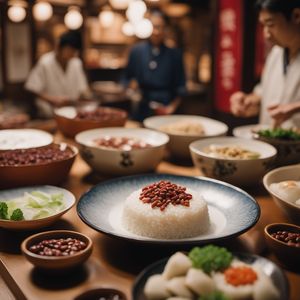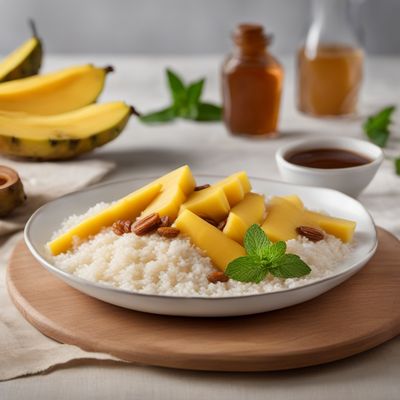
Dish
Postre de músico
Musician's Dessert
Postre de músico is made by combining sweetened condensed milk, evaporated milk, and fruit in a blender. The mixture is then poured into a baking dish and baked in the oven until it is set. The dessert is then chilled in the refrigerator until it is ready to serve. The fruit used in the dish can vary, but it is typically a combination of peaches, pineapple, and cherries. The dessert is sweet and creamy, with a fruity flavor that is perfect for a summer day.
Origins and history
Postre de músico originated in Peru and has been a popular dessert for many years. It is often served at special occasions, such as weddings and birthdays. The dessert is named after the musicians who would play at these events, as it was a favorite among them.
Dietary considerations
Gluten-free
Variations
There are many variations of Postre de músico, including using different types of fruit or adding nuts to the dish. Some people also like to add a layer of caramel to the top of the dessert for an extra layer of sweetness.
Presentation and garnishing
Postre de músico is typically served in a glass dish, with the fruit and cream mixture layered on top. The dessert can be garnished with fresh fruit or a sprinkle of cinnamon for a pop of color and flavor.
Tips & Tricks
To make the dish even more flavorful, try adding a pinch of salt to the sweetened condensed milk and evaporated milk mixture. This will help to balance out the sweetness of the dessert and make it even more delicious.
Side-dishes
Postre de músico is often served with a dollop of whipped cream on top. This helps to cut through the sweetness of the dessert and provides a nice contrast to the creamy texture.
Drink pairings
Postre de músico pairs well with a glass of sweet white wine or a cup of coffee. The wine complements the sweetness of the dessert, while the coffee helps to balance out the creaminess of the dish.
Delicious Postre de músico recipes
More dishes from this category... Browse all »

Aamras
Indian cuisine

Aasmi
Indian cuisine

Agra petha
Indian cuisine

Aiyùbīng
Taiwanese cuisine

Ajdnek
Slovenian cuisine

Akafuku
Japanese cuisine

Akanés
Greek cuisine

Akumaki
Japanese cuisine


